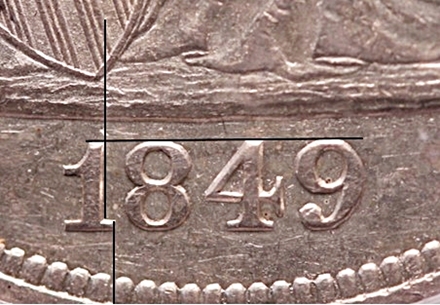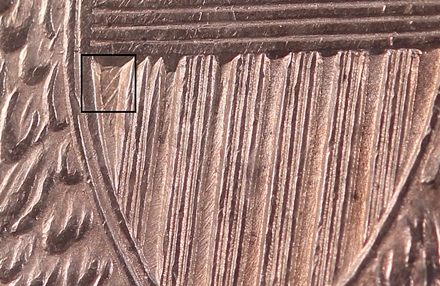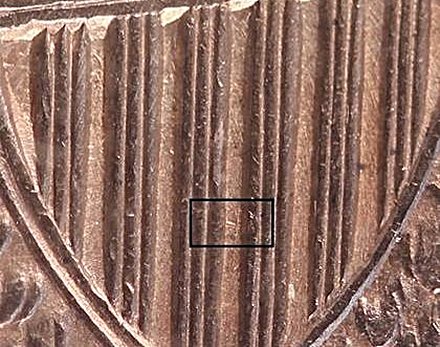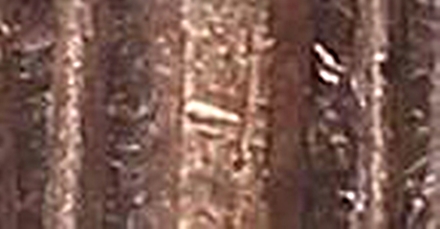|
|
Comments: This is the first of two uses of Obverse 1 and the only use of Reverse 1848 A in 1849. Reverse 1848 A was previously used to strike all 1848 business strikes, and subsequently to strike 1850 and 1851 business strikes. Its use for business strikes in 1852 is reported but unconfirmed. |
Obverse 1 Obverse 1 is the only business strike obverse die. The photo below shows the attribution grid.  1849 Obverse 1 attribution grid
|
Reverse 1848 A This reverse was well-documented in our article in issue #120 of the Gobrecht Journal (reference 11). It was used for 4 years, beginning in 1848 and ending in 1851 (its use in 1852 has been reported but is unconfirmed). It features some notable die lines near the top of shield recess #1, and two tiny die lines in the middle of recess #4. The die lines in recess #4 are important for attribution of the reverse in 1849 since die polishing removed the die lines in shield recess #1 midway through the production of OC-1. The die lines in recess #4 are the only markers that separate Reverse 1848 A from Reverse B. The photo below shows the position of the die lines in recess #1.  Reverse 1848 A die lines in shield recess #1 The following photo shows the position of the two parallel die lines in shield recess #4.  Reverse 1848 A die lines in shield recess #4 The next photo expands the view of the boxed area, showing the two tiny die lines that are the key marker for this die. Fortunately these lines don't diminish with wear. They can be seen on coins grading as low as F12.  Reverse 1848 A die lines in shield recess #4
One additional feature of OC-1 gives us another way to attribute the die marriage. We’ve examined over 300 examples of this die marriage. All of them have exhibited perfectly aligned dies, whereas all examples of OC-2 exhibit die rotations of 5-10 degrees counterclockwise. We can’t say for certain that the OC-1 dies never rotated, or that a perfectly aligned example of OC-2 doesn’t exist; however, this appears to be an easy way to separate the two die marriages, with very little chance of error. |
| Photo credits:
Obverse 1: 1849 NGC AU58, from the Osburn-Cushing reference collection. Reverse 1848 A: 1848 NGC AU58, from the Osburn-Cushing reference collection. |
